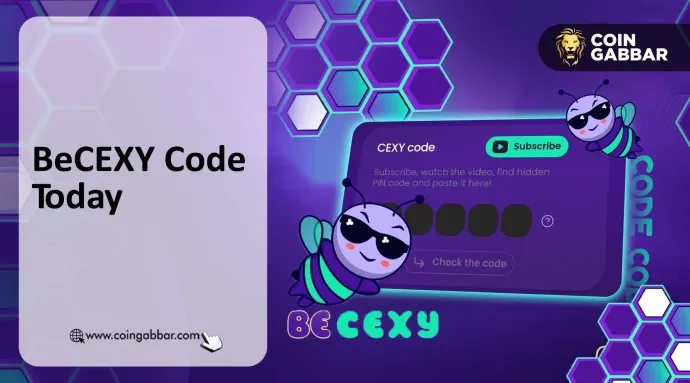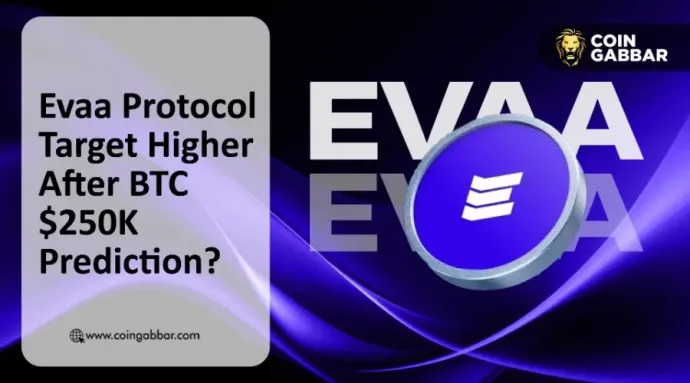I. Major Events
• August 13, 2025 - ERC 8004 was officially proposed on the EIP platform, indicating that the Ethereum community is exploring the standardization direction of Agent trust infrastructure.
• September 16, 2025 - Google announced the Agent Payments Protocol (AP2) and announced the x402 expansion/in partnership with Coinbase, incorporating stablecoins and crypto payments into the Agent payment system.
• September 23, 2025 - Cloudflare announced the joint launch of the x402 Foundation with Coinbase and incorporated x402 into its Agent SDK/MCP server.
• October 14, 2025 - Visa released the Trusted Agent Protocol (TAP), clearly developed in collaboration with Cloudflare, and provided specifications and implementation examples on the Visa Developer Center and GitHub.
II. Narrative Breakdown
The general market view is that "AI Agents are an important economic entity of the future," a judgment primarily based on their role transformation in economic activities, efficiency improvements, and the frameworks and visions established to capture and coordinate machine economic value. Below, we elaborate from four perspectives:
- AI Agents will gradually replace humans and become new "assets."
In the entire economy, AI Agents are positioned as "assets that can automatically generate continuous cash flow"—although currently humans account for 100%, the proportion of Agents will increase over time, gradually replacing humans. These assets can be tokenized, thereby establishing a decentralized incentive mechanism within the community. Entrepreneurs and the market believe that if these Agents possess "strong economic capabilities" in the future, then through tokenization and coordinating the interests among participants, entirely new decentralized economic entities and investment models can be created.
- Agent-to-Agent (A2A) collaboration is the most efficient business model.
Collaboration and payments between AI Agents (A2A) are considered the "sexiest" and "most efficient" business model of the future—this collaborative model arises from the need for multiple agents to work together to complete complex tasks in reality, similar to the outsourcing mechanisms in real society. Through division of labor and collaboration, AI Agents can delegate tasks to other Agents and pay fees from their income, while the blockchain has the advantage of implementing payment and information automatic execution logic.
- Standardization and value capture of the Agent economy.
To address the shortcomings of Google's A2A protocol, the proposal ERC-8004 introduces three key on-chain registries that solve key trust issues in the Agent economy:
Identity (Who am I): Solving the identity recognition problem of Agents.
Reputation (Reputation system): Addressing the question of "Why should I choose you?" by introducing external reference standards and objective evaluations.
Verifiability: Ensuring the verifiability of Agent work.
Such collaboration and standard-setting among Agents ensure "price uniformity, standardization, and marketization," ensuring that price matches quality.
- On-chain financial infrastructure of the AI economy.
As an important economic entity of the future, AI Agents rely on on-chain financial infrastructure: Agents have their own wallets and continuously accumulate multidimensional reputations on-chain. This inherent advantage, combined with the current cross-domain payment capabilities of stablecoins, efficiently solves the challenges of high-efficiency, low-cost transactions between Agents, providing necessary settlement and coordination capabilities for large-scale economic entities.
III. Terminology Explanation
In the terminology explanation section, I believe it is sufficient to reach the core definitions. Of course, to facilitate understanding, we illustrate through the evolution and structural comparison of human society, ultimately forming a complete machine society with four layers of collaboration: with language, currency, and credit systems:
• A2A: Allowing agents to "speak," as communication is a prerequisite.
• AP2: Enabling them to "pay," solving payment issues.
• x402: Allowing them to "use new money (cryptocurrency)," incorporating a crypto asset payment module.
• ERC-8004: Allowing them to "have identity and reputation," introducing an identity verification system.
Considering the relevance to the crypto market, we focus on and analyze x402 and ERC 8004, which are the value layer and identity layer, respectively, attempting to find alpha opportunities for layout.
IV. Focus Areas and Targets
Below, from a "bottom-up" perspective, we list the most noteworthy and strategic directions on x402/ERC-8004: underlying chain → protocol layer → application layer.
- Underlying Chain
ETH
▪ Core of standard-setting & network effect moat: As the proposer of ERC-8004 and a long-term standard promoter, Ethereum continues to hold a dominant position in standards like ERC-20 and ERC-721, possessing ecological inertia and network effect advantages.
▪ Strategic organization and direction establishment: After organizational reform, the Ethereum Foundation established the dAI Team with the mission of "becoming the settlement and coordination layer for AI Agents and the machine economy," further strengthening its voice in identity, reputation, and payment standards.
▪ Long-term value logic: ETH plays a dual role as "standard-setting + settlement layer fuel," serving as both the starting point for standard consensus and the foundational value carrier for the operation of the machine economy.
BASE
▪ Leading party in x402 technical standards: Backed by Coinbase's push from HTTP 402 to ERC-402, Base, as its on-chain extension, is the earliest testing ground for agent payments and machine settlements.
▪ Payment closed-loop advantage: As the native issuance chain of USDC, combined with Coinbase's fiat entry and wallet system, Base possesses a complete closed-loop capability from "real-world payments to on-chain settlements."
▪ Strategic positioning upgrade: Base is transitioning from a purely Ethereum L2 to infrastructure aimed at the AI Agent economy layer (Agentic Economy Layer), becoming the most likely main battleground for the ERC-402 standard to first land and form commercial flow.
SOL
▪ Strongest execution efficiency and landing capability: In scenarios such as micropayments, high-frequency communication, and automatic settlements, Solana, with its high TPS, low latency, and low Gas costs, inherently possesses the execution and scalability capabilities of the x402 concept.
▪ ICM vision and machine nativity: The Internet Capital Markets (ICM) vision proposed by the Anza team makes Solana an ideal platform for "native interaction between machines and assets," highly compatible with the payment logic of x402.
▪ Leading ecological maturity: Over the past two years, Solana has formed a complete on-chain ecological closed loop—from asset issuance, automatic trading to liquidity and credit management, it has established a practical operational foundation to support the Agent economy.
TAO (Bittensor)
▪ AI native infrastructure layer: Bittensor builds a decentralized AI network, organizing model training, inference, and evaluation through subnets, forming the underlying computing and value settlement foundation of the machine economy.
▪ Model reputation and incentive system: Its subnet scoring mechanism naturally possesses the "identity + reputation + reward" function, resonating with the reputation registry logic of ERC-8004.
▪ Machine payment and value capture closed loop: The TAO token undertakes model invocation settlement, verification incentives, and governance functions, being one of the earliest native assets to form a "paying AI-to-AI" closed loop.
KITE AI (not yet issued)
○ Infrastructure layer for Agent model collaboration: Kite AI aims to build a multi-Agent collaboration framework, allowing AI models, plugins, and APIs to complete task allocation and invocation in a unified environment, forming the "execution coordination layer" in the machine economy.
○ Verifiable execution and payment interface: The project integrates the AP2/x402 protocol into its architecture, allowing each Agent invocation to record verifiable payments and task outcomes, positioning itself as a "settleable intelligent agent operating system."
○ Ecological embedding and tokenization potential: The KITE team is attempting to introduce the ERC-8004 identity mechanism to assign reputation profiles to each Agent; it is expected to become the foundational protocol layer for the "Agent-to-Agent service market" in the future and achieve a tokenized closed loop for task execution and settlement.
- Protocol Layer + Application Layer
This layer is the key value capture area for x402 (value layer) and ERC-8004 (identity layer), bearing the core logic of "making the machine society operational," focusing on new protocols or old protocols enhanced by new narratives.
$DREAMS - Daydreams
○ Overview: Daydreams.Systems positions itself as an ecosystem and laboratory for autonomous agents, forming a closed loop through three core products: DAYDREAMS framework (construction), DREAMS Router (payment), and LUCID platform (operation). The goal is to enable agents to plan and execute long-term tasks with minimal management.
○ Positioning: Agent framework + payment routing + operating platform.
○ CA: Sol_GMzuntWYJLpNuCizrSR7ZXggiMdDzTNiEmSNHHunpump
○ Market Cap: $6.4M
○ Narrative Relevance: ⭐⭐⭐⭐⭐
$PAYAI - PayAI Network
○ Overview: PayAI positions itself as "payment infrastructure for the AI era," based on a Solana-first multi-network architecture, providing instant code-level payment capabilities for autonomous AI agents and microtransactions. The core component is the x402 Facilitator, emphasizing millisecond-level settlement, low fees, and seamless integration for agents/applications.
○ Positioning: Payment/settlement infrastructure.
○ CA: Sol_E7NgL19JbN8BhUDgWjkH8MtnbhJoaGaWJqosxZZepump
○ Market Cap: $5.1M
○ Narrative Relevance: ⭐⭐⭐⭐⭐
$MRDN - Meridian
○ Overview: Meridian provides "payment rails as a service," turning any website, API, dataset, or MCP server into a pay-per-use resource with a single line of middleware code, adhering to the standard HTTP/1.1 402 Payment Required. It is positioned as the "micro/nano service" settlement layer in the AI agent economy, emphasizing non-custodial, secure, and cross-framework interoperability.
○ Positioning: Payment rails, AI Agent settlement
○ CA: Base_0xe57e601c06689d3e2bf7db7bebb14b4ff28400c6
○ Market Cap: $890K (Coingecko statistics, may vary)
○ Narrative Relevance: ⭐⭐⭐⭐
$SANTA - S.A.N.T.A
○ Overview: SANTA is a decentralized AI "virtual company" composed of multiple agents launched by @questflow, aimed at automating operations and research for crypto teams.
○ Positioning: AI Agents Swarm
○ CA: Base_0x815269d17c10f0f3df7249370e0c1b9efe781aa8
○ Market Cap: $3.1M
○ Narrative Relevance: ⭐⭐⭐⭐
$AURA - Aura AI Marketplace
○ Overview: AurraCloud, centered around the x402 protocol, helps any AI agent, workflow, or API quickly realize on-chain micropayment monetization, providing a full-stack infrastructure from MCP hosting to smart wallets and dashboards.
○ Positioning: Platform-based infrastructure, payment protocol layer
○ CA: Base_0xdCaA5E062b2be18E52eA6ED7ba232538621dDC10
○ Market Cap: $1.3M
○ Narrative Relevance: ⭐⭐⭐⭐
$GLORIA - GLORIA AI
○ Overview: Gloria is an "AI-driven news intelligence platform" with the core goal of denoising, refining, and instantly distributing "the most important signals for trading and decision-making" in market news. The product operates in parallel across terminals, bots, and APIs, covering usage scenarios for both human users and autonomous AI agents, supported by tokens and a developer ecosystem.
○ Positioning: AI news intelligence
○ CA: Base_0x3b313f5615bbd6b200c71f84ec2f677b94df8674
○ Market Cap: $2.4M
○ Narrative Relevance: ⭐⭐⭐
$Virtuals - Virtuals Protocol
○ Overview: Virtuals Protocol builds a "productive AI agent society": each agent can autonomously provide services or products and conduct on-chain transactions with humans or other agents. All agents are tokenized into independent Agent Tokens, enabling capital formation, open participation, and incentive alignment; Virtuals Protocol has deeply integrated its ACP smart contracts with the x402 payment protocol.
○ Positioning: AI Agent financing infrastructure
○ CA: Base_0x0b3e328455c4059EEb9e3f84b5543F74E24e7E1b
○ Market Cap: $469.32M
○ Narrative Relevance: ⭐⭐⭐⭐⭐
$EIGEN - Eigen Cloud
○ Overview: EigenCloud is a "verifiable cloud" based on EigenLayer, using EigenCompute/EigenAI to turn AI and computing into verifiable services, and is working with AP2 and x402 to standardize agent payments and on-chain settlements.
○ Positioning: AI Agent verifiable cloud
○ CA: ETH_0xec53bF9167f50cDEB3Ae105f56099aaaB9061F83
○ Market Cap: $432.43M
○ Narrative Relevance: ⭐⭐⭐
$SWTCH - Switchboard
○ Overview: Switchboard positions itself as "everything can be an oracle," catering to multi-chain ecosystems, providing dApps with verifiable real-time data, composable aggregation capabilities, and secure random numbers. The core selling points are speed, permissionless access, and strong customization, aiming to allow developers to access any data source with minimal friction for use in contract logic.
○ Positioning: Decentralized oracle, Agent data services
○ CA: Sol_SW1TCHLmRGTfW5xZknqQdpdarB8PD95sJYWpNp9TbFx
○ Market Cap: $21.19M (FDV is $122.85M)
○ Narrative Relevance: ⭐⭐⭐
In addition to the emerging projects mentioned above, attention should also be paid to the recombination potential of traditional foundational protocols/public chains in the AI Agent narrative.
Examples:
Safe (multi-signature and treasury management) can evolve into an asset custody layer for "autonomous entities or machine accounts" in the agent economy;
Superfluid (stream payment protocol) naturally fits the continuous micropayment and service subscription scenarios under x402;
Protocols like ENS / EAS / Galxe for identity and credentials can provide ready-made reputation and verification modules for the ERC-8004 identity layer.
SUI (an early participant in AP2) is jointly testing the agent-to-agent micropayment model with Questflow/Google, and its object-oriented architecture allows for account abstraction and parallel payments, naturally adapting to AP2's multi-account authorization and budget control mechanisms.
V. Risk Warning
① High asset volatility: Currently in the early stage of narrative promotion, most projects, aside from traditional ones, have small market caps, weak liquidity, and significant volatility risks.
② Team and governance risks: Some project teams are anonymous, governance is inadequate, and fund ownership is opaque, posing high risks of manipulation and abandonment.
Consideration: The current narrative of AI Agents / Machine Economy remains somewhat abstract: although it has a standard prototype, it lacks "token anchor points/value drivers." Firstly, the ecosystem is in a testing phase, and the value capture mechanisms of cash flow and fee rates are difficult to assess, with the credible market scale unclear; secondly, there is a lack of intuitively usable products, making it challenging to form strong market consensus in the short term, requiring ongoing attention. Notably, the layouts of traditional giants like Google, Visa, and Cloudflare provide external trigger conditions for narrative breakout points.
免责声明:本文章仅代表作者个人观点,不代表本平台的立场和观点。本文章仅供信息分享,不构成对任何人的任何投资建议。用户与作者之间的任何争议,与本平台无关。如网页中刊载的文章或图片涉及侵权,请提供相关的权利证明和身份证明发送邮件到support@aicoin.com,本平台相关工作人员将会进行核查。




